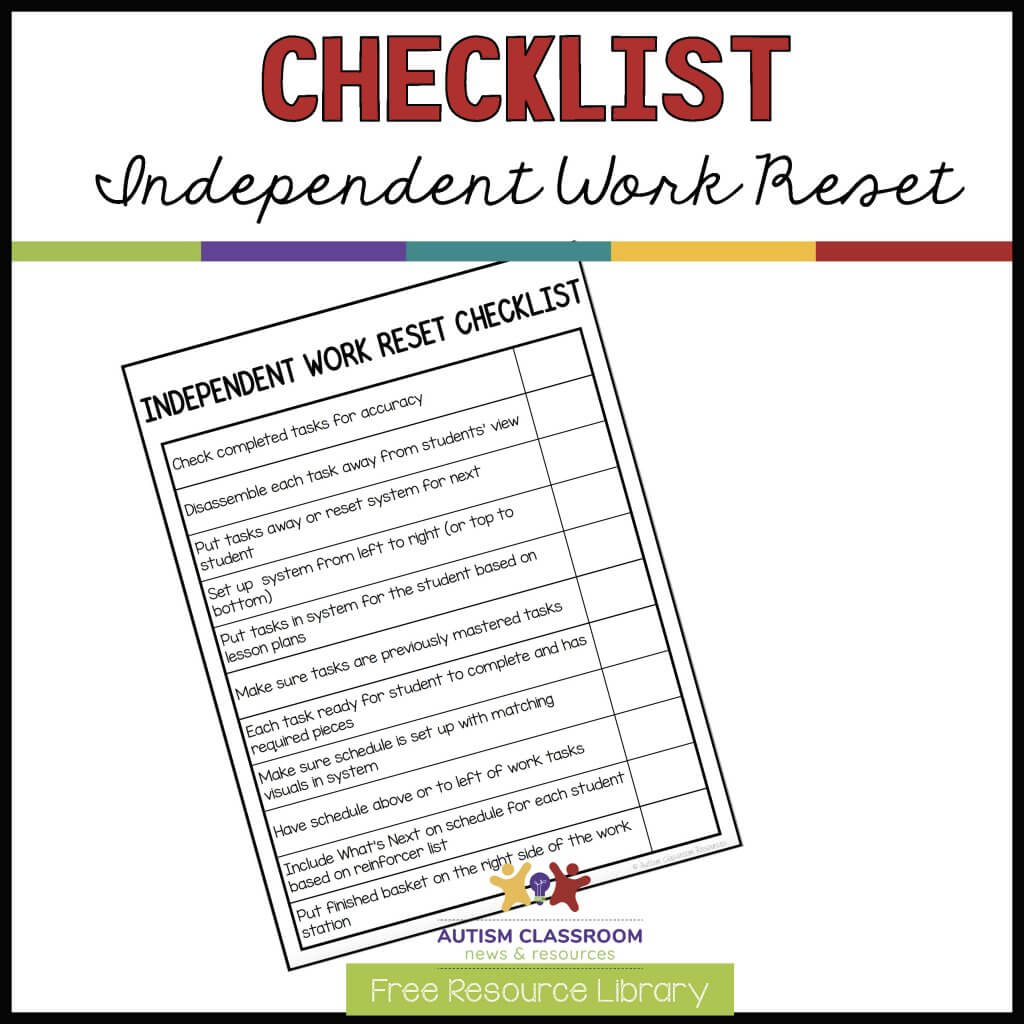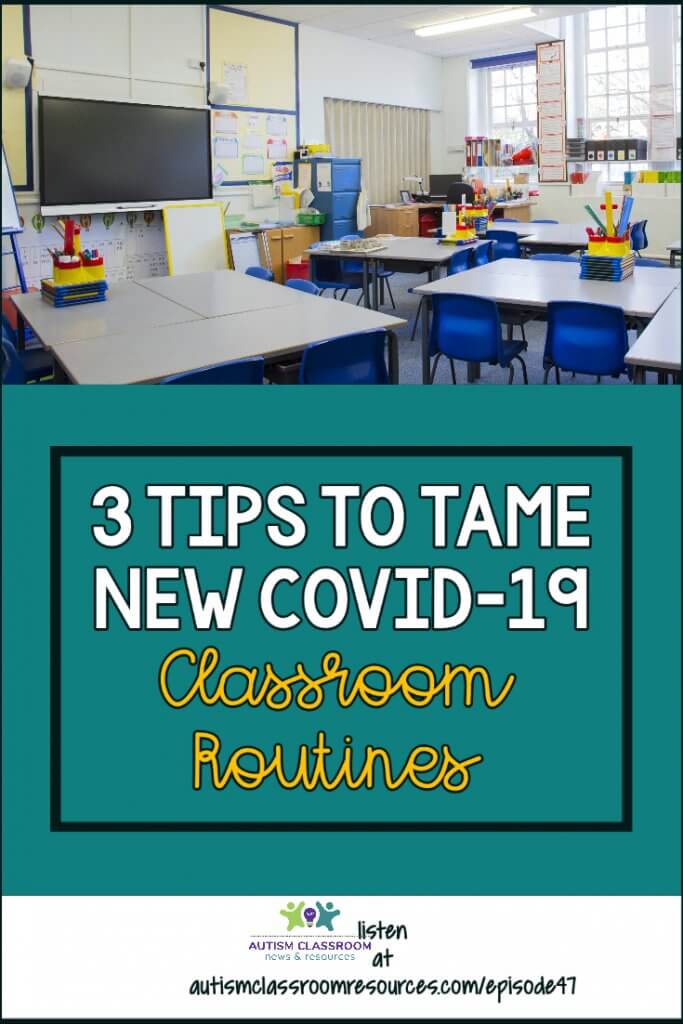At the beginning of the school year, it’s always all about the classroom routines. But if you are back in the classroom in 2020, you probably have a few new Covid-19 classroom routines that are new to everybody. Adding any new routines in the classroom can throw off the rhythm of the best functioning team. And let’s face it, there is enough going on in your head right now that anything you can use to begin to tame and rock the classroom organization is so worthwhile! So, in this episode I’ve got 3 tips you can use to help master those new classroom routines and get your year going.
Automation & Systems
If you’ve listened to any of the episodes where I talk about classroom setup, like in episode 41 where I talk about the model behind good classroom design, you know I like to automate as much of the everyday running of the classroom as possible. The less time you have to think about the structure and routine, the more time you have to focus on the teaching and the students. That hasn’t changed with our new Covid-19 reality in 2020. However, it does mean adding a few elements to our structure to keep the efficiency working.
3 Tips for Integrating New Classroom Routines
There are strategies we can easily incorporate using our structured classroom routines to rock this year just like any other. Hopefully these 3 tips can start you on your way to mastering the art of the classroom that still runs itself in 2020.
Tip #1: Put it in the Zoning Plan
If you have followed for a while, you know how much I love zoning plans. I talked about them in Episode 45 among many other places. If you don’t know what a zoning plan is, it’s like a staff schedule on steroids. The zoning plan is what lets the staff know their duties for each part of the day. I get pretty detailed with mine, down to who grabs the walkie talkie on the way out the door and who monitors the timer.
So, when you have new classroom routines, like sanitizing books and materials on a regular basis, it makes sense to add that to the duties that go into the zoning plan. Figure out who has time and write it into the job. In Episode 45 I shared a story of 4 paraprofessionals cleaning the snack area. The teacher, meanwhile, was trying to manage 20 preschoolers while setting up for circle. Zoning plans avoid that. In the zoning plan 1 staff member and maybe a student helper clean the snack area, while the others are helping manage the other 19 students in the circle area.
The long and short is that staff doesn’t know what needs to be done if you don’t tell them. But usually our special education support staff are so amazing that they will pick up what they see that needs to be done. It just might not always be what you wanted them doing at that time.
So, if you have new routines to clean off desks, sanitize books and materials, etc. write them down as you think of them. Make a list in the first few days of school. Then integrate them into your routines and schedules with your zoning plans.
Tip #2: Use Checklists for New Classroom Routines
Do you suffer from Decision Fatigue? I know I do. If you haven’t heard of it, decision fatigue is one of the reasons teachers are so exhausted at the end of the day. We make millions of decisions throughout the day and each one expends energy. I wrote more about decision fatigue and how to combat it to reduce stress in this blog post.
The thing with decision fatigue is that automating parts of your classroom with systems is one of the best ways to combat it. However, that will mean that you will need to delegate responsibilities to your team. Sometimes delegating is simple and makes sense. Other times it feels like it would just be easier to do it yourself. Or maybe you feel like when you delegate, you have to redo whatever you gave them. I know I’ve struggled with that a ton.
One way to reduce decision fatigue and make sure the new classroom routines are getting done the way you want and need them done is to use checklists. Checklists can save your sanity whether you are doing the task yourself or handing it off to others. When you use checklists, you don’t have to think about the steps to make sure you remember all the little details to be done. If you are handing the task off to others, they don’t have to think and you can be more assured that all the little details will get done.
Tip #3: Share the Load with Everyone
News flash. You can’t do everything that needs to be done in your classroom. It’s so tempting though isn’t it? Sometimes it just seems easier. But delegating is key to actually accomplishing what you need. And routine tasks are great things to delegate, especially using checklists. So here are a couple of hints that I find useful when delegating in the classroom.
Rethink Delegation
First, rethink what delegation means. Did you know that that when you try to do everything in your classroom, your staff might think that you don’t trust them? They also may be hesitant to take initiative to complete tasks without direction because they don’t want to mess something up. Reconsider delegation as not foisting something on someone else, but true collaboration in a team. Of course, remember that you want to share the not-fun tasks too. I talk more about this in Episode 24 Boosting Classroom Productivity.
Involve the Students
Second, don’t forget to assign some of the routine things to the students. Class jobs and helpers are an important way that students gain confidence and learn independence. Yes, the students might need some help with things. However, if you give them the job they can learn to clean their own area, their own materials and contribute to the classroom jobs as well. If needed, you can assign them to students with help from a staff member. And just make sure to program enough time into the schedule for them to learn to complete the task as needed. Oh, and checklists are great for students to follow to complete tasks to.
So hopefully that gives you some ideas of how to manage all the new chaos the Covid-19 situation presents. I’d love to hear some of your solutions, so hop over to our free Educators Facebook Group and share with us. We’ve been having great discussions about all topics back to school and managing distance learning and new situations in the classroom in the Special Educator Academy, so come grab a free 7-day trial and find out what it’s about.
And if you want to try out checklists, grab the independent work reset checklist that is free in the resource library. It’s a checklist for helping anyone set up or reset the systems to meet the needs of the area. Easy to laminate and post in the classroom area for everyone to follow.







